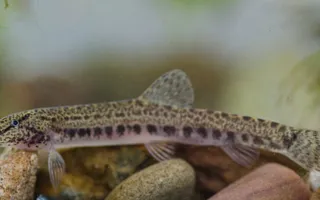Status:
- Listed on the International Union for Conservation of Nature (IUCN) Red List of Threatened Species
- Listed on Appendix III of the Bern Convention and Annex II of the European Commission Habitats and Species Directive (3). The inclusion of this species has resulted in an increase in interest in its conservation, and an obligation for member states to designate Special Areas of Conservation (SACs) in key areas where the spined loach occurs.
Appearance: loach (Cobitis taenia) have a long, slim cylindrical shape, a small head with a underslung mouth, and six tiny barbels on the upper jaw. The back and flanks of the fish are sandy brown in colouration, with dark brown spots that form a broken band down the upper and lower sides. The belly of the fish is white to light yellow.
Typical size: 5cm
Lifespan: 3 to 5 years
How to catch a spined loach
Due to their small size they are very difficult to catch. Small floats, lines, hooks and baits are important. Fishing during early evening into dark is best as due to their size, these fish are shy and prefer to feed when the risk of predation is low.
Where to catch a spined loach
They prefer flowing waters and usually inhabit streams and small rivers, but can be found in sandy canals.






